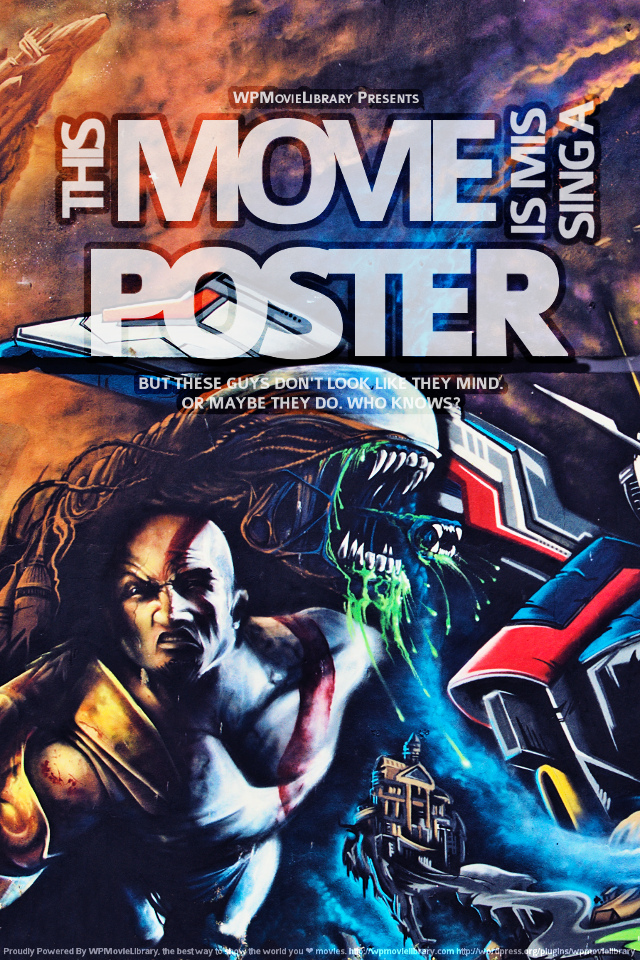Move FM movie review

Midnight Cowboy [Blu-Ray]
Overview
Metadata
Details
Images
Actors
Starring: —John Schlesinger’s Oscar-winning Midnight Cowboy is many things: an astute character study, a buddy picture, a human comedy, a stark drama, and an honest and straightforward depiction of the seedy streets of New York City in the late 1960s. What is perhaps most revelatory about the film is, despite its aesthetic embeddedness in the stylistics trappings of various European new waves, it has refused to age. It remains just as humane, just as moving, just as darkly humorous, just as revelatory as it was when it won the Oscars for Best Picture, Best Director, and Best Adapted Screenplay in 1970. It is still just as raw and potent as it was when it was first released with an X rating, making it the only film to win the Best Picture Oscar with that rating (at the time X was not yet synonymous with pornography, and the film was re-rated R two years later without any cuts).
Adapted from the 1965 novel by James Leo Herlihy by screenwriter Waldo Salt, who had been a victim of the McCarthy-era blacklist and had been working primarily in British television for the previous decade, the film centers on Joe Buck (Jon Voight), a naïve, but ambitious young man who leaves his job as a dishwasher in a small West Texas town to travel to New York City’”which for him might as well be another planet’”where he dreams he will be a successful hustler, bedding all the rich women he imagines are living there in need of the sexual satisfaction he can provide (‘œLots of rich women there,’ he tells one of his co-workers, ‘œbegging for it, paying for. And the men? They’re mostly a bunch of tootie-fruities’). After putting on his new boots, hat, starched Western shirt, and pants and checking himself in the mirror, he gathers his one cowhide suitcase and makes the long bus trip to the Big Apple, filled to the point of bursting with naive dreams of seducing beautiful women and getting paid for it. ‘œHell, the only thing I ever been good for is lovin’,’ he later says, which is indicative of both his limited worldview and his own tragically restricted sense of self.It should come as little surprise that Joe Buck’s ideals are shattered once he arrives in the city that never sleeps. He quickly learns that turning a trick is not as easy as he thought, and once he does manage to seduce an obnoxious woman with a Park Avenue penthouse (Sylvia Miles), she is absolutely indignant when he asks her for money. In a pathetic and ironic turn, Joe, being the soft heart that he is, ends up giving her money for taxi fare. And from there his dreams continue to spiral downward, as he is locked out of his room for failure to pay the rent and eventually must sell himself to a young, deeply closeted gay college student (Bob Balaban) who afterwards confesses he has no money to pay him. Joe, too tired and beaten down by the destruction of his dreams, doesn’t even have the energy to take the kid’s watch.Enter Enrico Salvatore Rizzo, also known as Ratso (Dustin Hoffman), who is the exact opposite of Joe. He never seems to have had any dreams or illusions, so they could never be shattered. Ratso is a sickly, limping, small time crook from the Bronx, who first cons Joe out of money by promising to set him up with a pimp, but instead delivers him into the hands of Mr. O’Daniel (John McGiver), an unhinged evangelical. They later make amends and becomes friends and companions. Ratso invites Joe to share his apartment in a condemned building, and somehow form a partnership and alliance that turns Midnight Cowboy into an unexpectedly endearing love story.The film was British director John Schlesinger’s Hollywood debut, and because he was not native to New York, he was able to bring an outsider’s viewpoint that redefined the city and America. Schlesinger lets first-time cinematographer Adam Holender’s camera linger over the neon signs, arching skyscrapers, and eclectic assortment of people that most Americans take for granted. The camera turns the city itself into as much of a character as any of the people, and we begin to recognize its many traits. If Park Avenue is the place where dreams are made, then 42nd Street, which at the time was a poverty row of seedy movie theaters, cheap motels, and erotic shops, is where they are shattered.Schlesinger was one of the principle architects of the British New Wave cinema movement in the early ’60s, and he had already helmed a number of gritty, social-realist classics in his native England, including Billy Liar (1963) and Darling (1965), for which Julie Christie won the Best Actress Oscar. An aesthetic chameleon, Schlesinger brought with him an armament of European art cinema techniques, which he employs in various ways all throughout Midnight Cowboy to consistently astonishing effect. The overall aesthetic is one of near-documentary realism that uses muted colors, grainy filmstock, and handheld camerawork on location to convey the experience of New York City. But, Schlesinger also incorporates complex flashbacks, dream and fantasy sequences, black and white photography, sped-up action, and symbolic imagery. He also makes extensive use of American pop culture iconography, such as low-budget science fiction movies, Andy Warhol-esque drug parties, taxi cabs, run-down tenement buildings, penthouse apartments, board games, fur coats, billboards, commercial jingles, pawn shops, trash TV, and flashing’”always flashing’”neon signs. Just as the disembodied eyes of Dr. T.J. Eckleburg starred out over the ‘œgrotesque’ and ‘œdesolate’ ‘œvalley of ashes’ of Queens in F. Scott Fitzgerald’s The Great Gatsby, Joe’s world is constantly watched over by the giant neon letters on the side of the Mutual of New York building, whose red-lettered acronym MONY he mistakes for literally spelling money.Voight and Hoffman, both of whom were nominated for Oscars, are brilliant in their respective roles, and they have a charm and chemistry that overcomes their destitute existence. Voight was a virtual unknown at the time, while Hoffman was coming off the massive success of Mike Nichol’s generation-defining comedy The Graduate (1967), which made his choice to play the greasy, dying Ratso so surprising. Jean ‘œToots’ Thielemans’s haunting score, with its lonely harmonica, punctuate the lowest aspects of the film, while Nilsson’s memorable ditty ‘œEverybody’s Talkin” is used consistently to remind us of Joe Buck’s aspirations and what it means to still have dreams. By the end of the film, he has newer, more down-to-earth longings, but by that point, you have to wonder if his experiences haven’t somehow ruined him; his simplicity may, in the end, be the closest thing he has to a saving grace. Nevertheless, the end of Midnight Cowboy is one of the saddest, most heartfelt moments I have ever experienced in a film, the kind of scene that sticks to your gut for a long time. It doesn’t try to force any answers because, with the kind of questions this film raises, none would suffice.Midnight Cowboy Criterion Collection Blu-ray
Aspect Ratio
1.85:1AudioEnglish DTS-HD Master Audio 5.1 surround
English Linear PCM 1.0 monauralSubtitles
EnglishSupplementsAudio commentary from 1991 by director John Schlesinger and producer Jerome Hellman
Video essay with commentary by Holender
Photo gallery with commentary by photographer Michael ChildersThe Crowd Around the Cowboy, a 1969 short film made on locationWaldo Salt: A Screenwriter’s Journey, a 1990 documentary by Eugene Corr and Robert Hillmann
Two short documentaries from 2004 on the making and release of Midnight CowboyInterview with actor Jon Voight on The David Frost Show from 1970
Voight’s original screen test
Interview from 2000 with Schlesinger for BAFTA Los Angeles
Excerpts from the 2002 BAFTA Los Angeles tribute to Schlesinger
Trailer
Essay by critic Mark HarrisDistributor
The Criterion CollectionSRP
$39.95Release Date
May 29, 2018
COMMENTS
Criterion’s Blu-ray presentation of Midnight Cowboy comes from a new 4K digital restoration that was approved by cinematographer Adam Holender. The transfer was made from the original 35mm camera negative, with a 35mm interpositive being used to replace some parts of the negative that were damaged. A 35mm theatrical print made for the film’s 35th anniversary in 2004 under the supervision of director John Schlesinger, producer Jerome Hellman, and Holdender was used as reference for color correction, which I imagine will come in handy because some are likely to complain that the image looks too greenish. Overall, though, the transfer looks great. I should note that, in many ways, Midnight Cowboy is a fairly rough-looking film with a lot of variation in terms of sharpness, detail, and grain. Some shots and scenes look quite grainy, while others are much smoother. The overall look of the film is a bit soft, which should be expected from a film of this era and one that takes many of its aesthetic cues from social-realist European film movements and documentaries. Colors look good, with Joe Buck’s brightly colored shirts and the various neon scenes around Times Square popping off the screen with nice intensity. There is little in the way of dirt or damage in the image, as it was given a thorough digital restoration. In terms of the soundtrack, we have both the original monaural track, transferred from the 35mm magnetic tracks, and an alternate 5.1-channel DTS-HD Master Audio mix, which I assume is the same one that was made for the 2004 MGM DVD.
The supplements are a fantastic and wide-ranging mix of the old and the new, dating all the way back to the 1991 Criterion laser disc, which is where we get the fantastic audio commentary by Schlesinger and Hellman. I remember listening to that commentary back in the mid-’90s when I bought the laser disc specifically for the commentary, and it is just as informative and engaging as I remember it. Also included are two documentaries that originally appeared on MGM’s 35th Anniversary DVD: ‘œAfter Midnight: Reflecting on a Classic’ and ‘œControversy and Acclaim.’ New to Criterion’s Blu-ray is a 25-minute video essay by Holender about his work on the film and a 14-minute photo gallery of behind-the-scenes candid shots with commentary by photographer Michael Childers, who was Schlesinger’s life partner and worked as his assistant on Midnight Cowboy. There is also some great stuff from the archives, including a 15-minute interview with Schlesinger by Merle Goldberg for BAFTA Los Angeles in 2000; 30 minutes of excerpts from BAFTA’s tribute to Schlesinger in 2002; a 15-minute interview with Jon Voight on The David Frost Show in 1970; 7 minutes of footage from Voight’s original screen test; ‘œThe Crowd Around the Cowboy,’ a 9-minute short documentary from 1969 that was shot during the film’s production on the streets of New York by Finnish cinematographer Jeri Sopanen, and a genuinely terrible new trailer (why didn’t they include the nearly perfect 1994 25th-anniversary re-release trailer?). And, saving one of the best for last, we also get Waldo Salt: A Screenwriter’s Journey, a 60-minute Oscar-nominated documentary from 1990 by Eugene Corr and Robert Hillmann that traces the life of the blacklisted screenwriter
Copyright © 2018 James Kendrick
Thoughts? E-mail James Kendrick
All images copyright © The Criterion Collection / MGM
move fm australian News
Israel’s war cabinet meeting to discuss Iranian attack
In a largely symbolic way, Iran has launched a...
Read MoreAustralia in shock, six people dead, 8 wounded in mass attack
SYDNEY, NSW, Australia – Six people were stabbed to...
Read MoreChina trying to gain territory through force, says US admiral
SYDNEY, Australia: This week, Admiral John Aquilino, Commander of...
Read MoreSurprise shifts: US, Germany slip in world happiness rankings
ISLAMABAD, Pakistan – Pakistan has once again stolen the...
Read More





